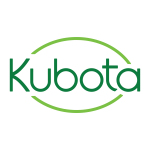
Kubota Vision to Present at the Ophthalmology Innovation Summit (OIS) Myopia Innovation Showcase
Presentation Focuses on the Rising Myopia Pandemic, the Challenges Myopic Patients Face, and Kubota Vision’s Novel Approach to Myopia Inhibition
SEATTLE–(BUSINESS WIRE)–Kubota Vision Inc. (Kubota Vision), a clinical-stage specialty ophthalmology company and wholly-owned subsidiary of Kubota Pharmaceutical Holdings Co., Ltd. (Tokyo 4596), today announced that Ryo Kubota, MD, PhD, Chairman, President and CEO of Kubota Vision Inc., will speak at the Ophthalmology Innovation Summit (OIS) Myopia Innovation Showcase on April 29, 2021 in the U.S.
Dr. Kubota’s presentation will summarize the growing incidence myopia, the risks and challenges faced by myopic patients, and the potential benefits of Kubota Glass™, Kubota Vision’s novel augmented-reality-based optical system designed to inhibit myopia progression. The company is currently evaluating Kubota Glass™ for the inhibition of myopia progression in multiple clinical studies.
Myopia, the most common ocular disorder worldwide, is the leading cause of visual impairment in children. Alarmingly, the incidence of myopia is increasing rapidly. In 2020, an estimated 2.6 billion people (34% of the world’s population) were myopic with 399 million (5.2%) having high myopia. This is projected to rise to 50% and 10%, respectively, over the next 30 years. It is projected myopia will be the leading cause of permanent blindness by 2050.*1
“Kubota Glass™ uses our proprietary Active Stimulation technology to actively project myopically defocused images onto the periphery of the retina to stimulate the reduction in myopia progression,” said Dr. Kubota. “Our approach is unique in its ability to control the size, retinal location, luminance, chromaticity, duration of activation, and dioptric magnitude of the peripheral defocus stimulus to potentially maximize control of myopia progression.”
Interested parties may register for the OIS Myopia Innovation Showcase free of charge here.
*1 Holden BA, Fricke TR, Wilson DA, et al. Global Prevalence of Myopia and High Myopia and Temporal Trends from 2000 through 2050. Ophthalmology. Volume 123, Number 5, May 2016.
About Kubota Glass™ Technology
Kubota Glass™ technology works to reduce the increase in axial length associated with myopia by projecting myopically-defocused virtual images generated using micro-LEDS on the peripheral visual field to actively stimulate the retina. Passive stimulation using myopic defocus is already in use in the US with a contact lens, “MiSight® 1 day” by CooperVision, which is U.S. Food and Drug Administration (FDA) approved to slow the progression of myopia. This product, which uses multifocal contact lens technology, passively stimulates the entire peripheral retina with light myopically defocused by the non-central power of the contact lens. Kubota Glass™ technology leverages nanotechnology in its electronic glasses-based device and seeks to reduce the progression of myopia by actively stimulating the retina for shorter periods while maintaining high-quality central vision and not affecting daily activities.
About Myopia
Myopia, or nearsightedness, is a refractive vision disorder which causes blurred sight at a distance. It occurs when the length of the eye (known as axial length) is too great; myopia progresses as axial length increases with age, until the early 20s. Myopia currently affects 2.56 billion people worldwide and is projected to affect 3.4 billion people by 2030, if current trends remain unchanged.*2 Myopia increases the risk of developing sight-threatening diseases such as myopic maculopathy, retinal detachment, and glaucoma – making a measurable impact on society.*3 Today children in East Asia, including Japan, China, Hong Kong, Taiwan, South Korea, Singapore, develop myopia at a high rate; for example, 96.5% of 19-year-old males suffer from myopia in Seoul.*4 Myopia also affects over 40% of individuals over the age of 12 years in the U.S.*5
*2 Report of the Joint World Health Organization–Brien Holden Vision Institute, University of New South Wales, Sydney, Australia. The impact of myopia and high myopia. 16–18 March 2015. https://www.who.int/blindness/causes/MyopiaReportforWeb.pdf.
*3 Flitcroft DI. The complex interactions of retinal, optical and environmental factors in myopia aetiology. Prog Retin Eye Res. 2012 Nov;31(6):622-60
*4 Dolin E. The myopia boom. Nature 2015 Mar 19;519(7543):276-8
*5 Myopia. International Myopia Institute. https://myopiainstitute.org/myopia/. Accessed April 26, 2021.
About Kubota Vision Inc.
Kubota Vision Inc. is a wholly-owned subsidiary of Kubota Pharmaceutical Holdings Co., Ltd. (Tokyo 4596) committed to translating innovation into a diverse portfolio of drugs and devices to preserve and restore vision for millions of people worldwide. Kubota Pharmaceutical group’s development pipeline includes drug candidates for the treatment of diabetic retinopathy, Stargardt disease, and optogenetics-based gene therapy for the treatment of retinitis pigmentosa. The company is also developing a handheld OCT device for the monitoring of neovascular retinal diseases, to be used directly by patients, and wearable device for myopia control. https://www.kubotavision.com/; https://www.kubotaholdings.co.jp/en/
Cautionary Statements
Certain statements contained in this press release are forward-looking statements within the meaning of Section 27A of the Securities Act of 1933 and Section 21E of the Securities Exchange Act of 1934 and the Private Securities Litigation Reform Act of 1995. Any statements contained in this press release that are not statements of historical fact may be deemed to be forward-looking statements. These forward-looking statements include statements regarding our expectations related to our development plans and ability to successfully develop and commercialize our product candidates and the potential efficacy, future development plans and commercial potential of our product candidates. These statements are based on current assumptions that involve risks, uncertainties and other factors that could cause the actual results, events or developments to differ materially from those expressed or implied by such forward-looking statements. These risks and uncertainties, many of which are beyond our control, include, but are not limited to: our investigational product candidates may not demonstrate the expected safety and efficacy; our pre-clinical development efforts may not yield additional product candidates; any of our or our collaborators’ product candidates may fail in development, may not receive required regulatory approvals, or may be delayed to a point where they are not commercially viable; our clinical trials could be delayed; new developments in the intensely competitive ophthalmic pharmaceutical market may require changes in our clinical trial plans or limit the potential benefits of our investigational product candidates; the impact of expanded product development and clinical activities on operating expenses; adverse conditions in the general domestic and global economic markets; as well as the other risks identified in our filings with the Securities and Exchange Commission. These forward-looking statements speak only as of the date hereof and we assume no obligation to update these forward-looking statements, and readers are cautioned not to place undue reliance on such forward-looking statements. For a detailed discussion of the foregoing risks and other risk factors, please refer to our filings with the Securities and Exchange Commission, which are available on Kubota Pharmaceutical Holdings (Kubota Vision’s parent company) investor relations website (https://www.kubotaholdings.co.jp/en/ir/) and on the SEC’s website (http://www.sec.gov).
“Kubota Vision”, the Kubota Vision logo and “Kubota” are registered trademarks or trademarks of Kubota Vision Inc. or Kubota Pharmaceutical Holdings in various jurisdictions.
Contacts
Media and Investor Relations Contact:
Hiroki Maekawa
Chief Financial Officer
Phone: +81-3-6550-8928
Email: pr@kubotaholdings.co.jp
